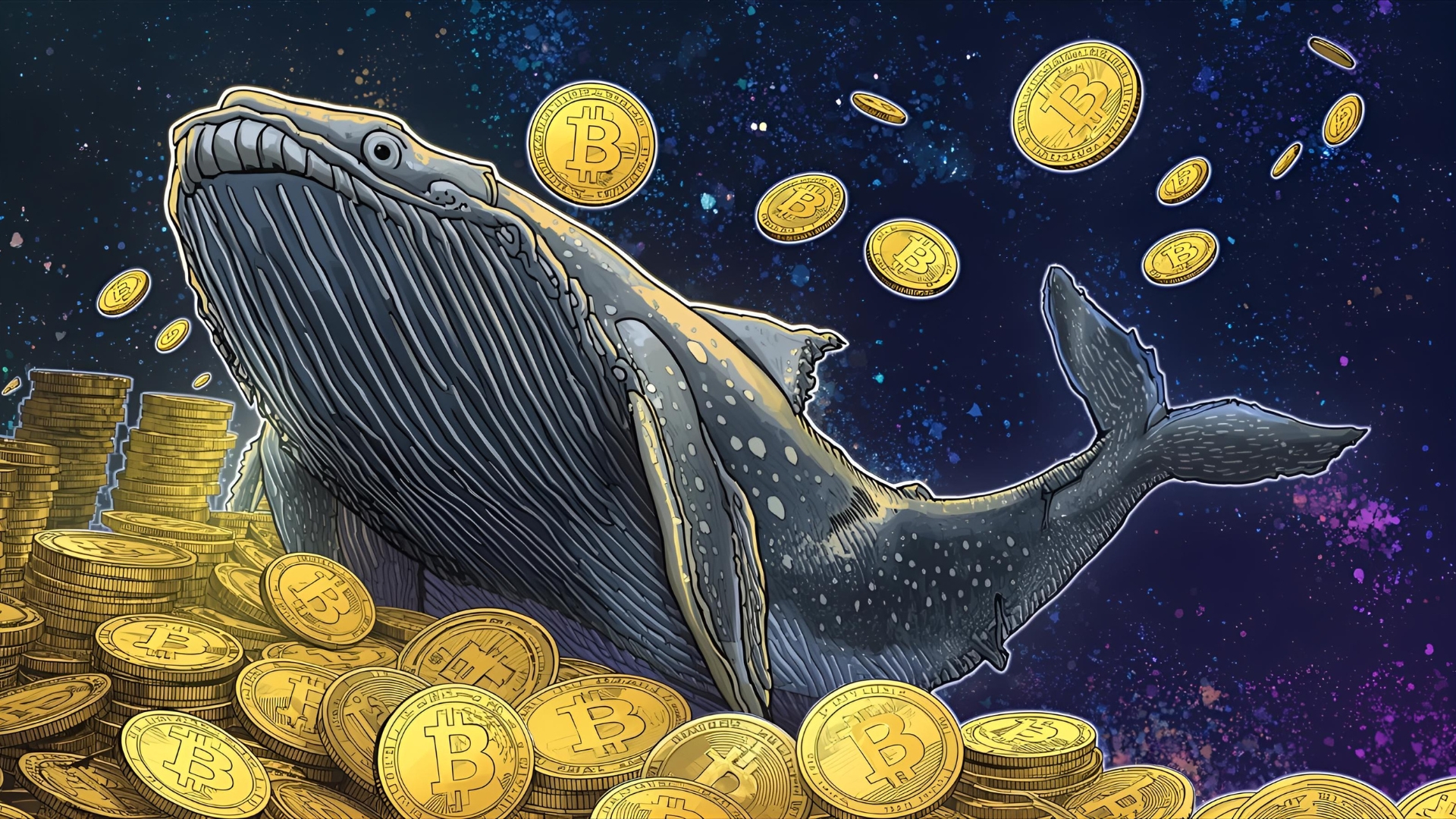In crypto markets, the most prominent players rarely announce their moves. They don’t need to. Their footprints are visible to anyone who knows where to look. When large holders—often called whales—quietly buy and tuck away sizeable amounts of a token, the market structure around that asset begins to change. This strategic, sometimes weeks-long behavior is known as whale accumulation, and it can be a powerful leading indicator for price trends across altcoins.
For traders and long-term investors watching Solana (SOL) and similar high-beta assets, understanding why whale accumulation matters can be the difference between catching a multi-month trend early and arriving late to a crowded trade. This article breaks down the mechanics of accumulation, the measurable effects on liquidity, volatility, and price discovery, and how to use on-chain data plus order book signals to read the market’s subtext without overreacting to noise. By the end, you’ll know what to monitor, how to interpret conflicting signals, and how to incorporate whale behavior into a disciplined strategy—without falling for hype.
What Is Whale Accumulation?
Whale accumulation is the sustained process of high-net-worth entities, funds, market makers, or early insiders purchasing significant volumes of a token over time, typically in a way that minimizes slippage and public attention. Unlike a sudden spike in volume, accumulation shows up as persistent net inflows into whale wallets, slow withdrawals from exchanges, and growing supply distribution toward larger cohorts.
While retail traders tend to focus on price candles, whales focus on liquidity pockets, market depth, and execution efficiency. Accumulation is often executed algorithmically in slices across multiple venues to spread out impact. The result is a gradual shift in supply dynamics that can compress available float and alter how the market responds to new demand.
Accumulation vs. Distribution
It’s crucial to differentiate accumulation from distribution. Accumulation concentrates supply into stronger hands that are less likely to sell on small moves, while distribution disperses supply to weaker hands that may sell quickly under stress. If whales are genuinely accumulating, dips tend to be shallower, buy walls appear more consistently, and higher lows support rallies. In distribution phases, order books look thin on the bid, and bounces are often sold into quickly.
Why Whale Accumulation Matters for Altcoins Like Solana

Altcoins, especially those with growing ecosystems like Solana, are highly sensitive to changes in free-floating supply and liquidity conditions. When whales accumulate, three market forces typically shift in tandem: liquidity, sentiment, and volatility.
Liquidity Compression and the “Float”
As whales move tokens off exchanges into cold wallets or staking, the tradable supply—or float—shrinks. This liquidity compression creates an environment where marginal buy pressure can move the price further, faster. For an altcoin like SOL, where ecosystem activity drives periodic bursts of demand, a reduced float can amplify rallies, accelerate price discovery, and sustain upside momentum longer than expected.
Volatility With a Tailwind
Whale accumulation often reduces downside volatility by providing consistent bids during pullbacks. The same dynamic can increase upside volatility when demand spikes and fewer tokens are available for sale at each level. This volatility asymmetry—soft floors and air pockets above—helps explain why altcoin rallies can feel “one-sided” after significant accumulation.
Credibility and Narrative Reinforcement
Large, sophisticated buyers signal confidence. Whether it’s a new DeFi protocol launching on Solana, improved throughput and fees, or a wave of NFT and gaming interest, whale accumulation validates the underlying narrative. That validation can attract smart money followers, re-ignite retail interest, and create a feedback loop where narrative and flows reinforce each other.
Mechanics How Whales Actually Accumulate
Whales don’t chase; they engineer liquidity. They may seed buy walls at key levels, place resting bids in accumulation zones, and let price come to them. They balance on-chain spot buying with derivatives hedges, or even accumulate via OTC desks to minimize a visible footprint.
Order Book and Execution
On centralized exchanges, accumulation appears as replenishing bids and persistent absorption of sells. You might notice the book refilling at the same levels after every dip, hinting at an algorithm redistributing orders. On DEXs, accumulation can be routed through multiple pools to avoid alarming MEV bots or front-running.
On-Chain Footprints
On-chain, watch for whale wallet clusters receiving steady inflows, exchanges showing net outflows, and staking addresses growing their balances. Rising active addresses alone aren’t proof of accumulation, but when combined with supply distribution tilting toward large cohorts, the picture sharpens. Additional signs include declining realized cap pressure on short-term holders and a rise in coin days destroyed stability—signals that coins are aging in stronger hands.
Solana as a Case Study: Why SOL Is Sensitive to Whale Behavior
Solana’s design emphasizes high throughput and low fees, enabling vibrant activity across DeFi, NFTs, and consumer apps. This activity sometimes leads to bursts of organic demand—from users paying for transactions to developers and funds accumulating for strategic exposure. When whales accumulate SOL, the effect ripples widely through:
Staking Dynamics and Liquid Staking. High-stakes participation can tighten supply further. If whales stake or use liquid staking derivatives, they lock up tokens while preserving some liquidity. That lowers the immediately tradable float and adds a structural tailwind during demand surges.
Ecosystem Growth and Treasury Management
Projects building on Solana may raise treasuries denominated in SOL or require SOL for operations and liquidity. When whales accumulate into these ecosystem catalysts, they not only front-run usage growth but also stabilize order books during token launches, farming cycles, and airdrops.
Cross-Market Correlations
SOL often trades with a higher beta to macro crypto flows than larger assets like BTC. When whales hedge or rotate—say from ETH to SOL—these flows can produce outsized moves in SOL, especially if it’s already in an accumulation phase. The combination of rotational capital, thinning float, and narrative momentum can produce strong, extended trends.
Signals That Hint at Whale Accumulation
No single metric proves accumulation. Instead, think in clusters: confirm with at least two or three independent signals that line up across time.
Exchange Flows and Supply Distribution
Sustained exchange outflows alongside increasing balances in large, non-exchange wallets are a classic pair. If supply held by 1%–10% cohorts rises while small-holder supply stagnates or falls, that’s a strong tell of whale accumulation.
Order Book Depth and Market Microstructure
Rising bid depth on major venues, consistent limit bids that refresh on dips, and anchored VWAP behavior indicate sophisticated buying. Look for liquidity sweeps that nudge price into known sell zones, absorb supply, and then let price mean-revert—classic accumulation tactics.
Derivatives: Open Interest and Funding
Whales often hedge in derivatives while accumulating spot. A rising open interest with neutral-to-slightly-negative funding rates during spot inflows can indicate hedged accumulation. If funding turns strongly positive without corresponding spot outflows, that may signal overheated longs rather than whales at work.
On-Chain Cohort Analysis
Track changes in balances for 10K+ and 100K+ cohorts, whale wallet clusters, and new entity growth among large holders. Combine with token age metrics to see if older coins are staying dormant while fresh supply moves to large wallets.
How Whale Accumulation Influences Market Structure

Whale accumulation reshapes the battleground between buyers and sellers.
Building Higher Lows
When whales patiently buy dips, each sell-off finds structural support at or above prior levels. The chart prints higher lows, and the point of control in volume profiles shifts upward. This tells you that the cost basis of size buyers is rising—a signal of confidence.
Creating Air Pockets Above
By soaking up supply below, whales remove resting sell liquidity over time. When demand surprises to the upside—perhaps from a new protocol launch—price can slice through thin liquidity bands, resulting in sharp, impulsive legs higher.
Extending Trend Durations
Because accumulation creates stickier hands, rallies often persist longer. Corrections are met with bids; weak hands capitulate into strong hands; and trend structure becomes more orderly. Even when inevitable pullbacks arrive, they often retrace to accumulation zones rather than fully unwind.
Practical Tactics Reading and Using Accumulation Without Over-Optimizing
Understanding whale accumulation doesn’t mean unthinkingly copying them. It means aligning your process with how liquidity actually works.
Build a Multi-Signal Dashboard
Rely on a confluence of on-chain data, order book liquidity, exchange flows, and derivatives posture. If two signals say “accumulation” but two say “distribution,” treat it as noise and preserve capital. A simple rule is to act only when at least three independent data clusters align.
Focus on Levels, Not Predictions
Map accumulation zones where bids repeatedly absorb supply. Use these zones for entries and invalidations. Instead of forecasting price targets, manage trades around structure: if a zone breaks decisively with rising supply on exchanges, assume whales stepped back and reduce risk.
Respect Time Horizons
Whales often operate on multi-week or multi-month horizons. If you’re a shorter-term trader, align your expectation with their timeframe or risk chopping yourself out of a good thesis by responding to intraday noise.
Avoid Narrative Traps
A growing social buzz about whales can itself be a contrarian sign if the data doesn’t support it. Verify claims with supply distribution, exchange outflows, and real order book behavior. If everyone is shouting “whales are buying!” but books are thin and funding is spiking, be skeptical.
Risk Management During Accumulation Phases
Even when whale accumulation is real, rallies can be volatile and messy.
Plan for Shakeouts
Whales sometimes allow or even induce stop hunts to refill at better prices. Expect swift wicks into prior lows before resumption. Place stops in sensible zones that reflect structure, not obvious cluster points.
Size According to Liquidity
As the float tightens, the price can move farther than usual in both directions. Consider smaller position sizes with wider invalidations rather than oversized bets with tight stops that get whipped out repeatedly.
Diversify Across Correlated Assets
If you’re bullish on SOL because of accumulation, consider whether correlated assets in the Solana ecosystem show similar structure. Diversification within a narrative can reduce idiosyncratic risk while maintaining thesis exposure.
Common Myths About Whale Accumulation
“Whales Always Win”
Whales are mighty, not omniscient. Macro shocks, regulatory headlines, and sudden liquidity events can invalidate accumulation setups. Treat whale activity as probabilistic, not guaranteed.
“Any Exchange Outflow Means Accumulation”
Tokens move off exchanges for many reasons, including custody, staking, or internal wallet rebalancing. Validate with cohort balances, order book behavior, and derivatives hedging to avoid false positives.
“You Can Just Follow One Wallet”
Sophisticated entities fragment activity across many wallets and venues. Obsessing over a single address invites bias. Use cluster analysis and aggregate metrics instead.
How to Track Whale Accumulation for Solana and Other Altcoins
Monitor Exchange Reserves
Track SOL balances on major exchanges. A consistent downtrend in reserves, especially when the price is stable or rising slowly, supports an accumulation thesis. Confirm with netflow metrics rather than single-day spikes.
Watch Large Holder Cohorts
Follow changes in supply held by 10K+, 100K+, and 1M+ token groups. Sustained increases among these cohorts, without matching exchange inflows, suggest whales are parking tokens off-market.
Observe Order Book Changes Over Time
Snapshot market depth during quiet hours and compare week over week. If bid depth improves at repeating levels while ask side thins after rallies, that’s the signature of smart money accumulation and judicious distribution into strength.
Cross-Check With Derivatives
If open interest rises but funding stays tame or negative while spot netflows are outward, whales may be hedging spot longs. Conversely, euphoric funding with flat spot flows often marks late-stage momentum, not accumulation.
Integrating Accumulation Into a Strategy for SOL

Define Your Accumulation Trigger
Design a rubric: for example, exchange reserves down for two consecutive weeks, large cohort balances up, and bid depth rising across two major venues. Only when all three conditions are met do you begin scaling in.
Scale Entries and Respect Invalidations
Enter in tranches within accumulation zones. If the zone fails—confirmed by rising exchange balances and weakening bids—step aside. This converts a narrative into rules and reduces emotional decision-making.
Let Winners Breathe
If you entered early in a genuine accumulation phase, resist the urge to micromanage every wick. Use higher lows and moving VWAP behavior to trail stops rather than cutting winners prematurely.
Macro, Regulation, and the Limits of Whale Signals
Whale accumulation doesn’t exist in a vacuum. Macro liquidity conditions, interest-rate expectations, and regulatory headlines can overwhelm even the strongest microstructure. Treat accumulation as a context amplifier—most effective when macro is neutral to supportive. If liquidity dries up or risk assets suffer a broad de-rating, accumulation may slow a drawdown rather than reverse it.
Bottom Line for Solana Watchers
For altcoins like Solana, whale accumulation is more than a curious on-chain artifact—it’s a structural shift in who holds the supply and how that supply behaves under stress. When whales quietly move tokens off exchanges, fortify bid depth, and hedge smartly in derivatives, the market’s microstructure tilts. Dips get bought, rallies extend, and price discoveries happen in leaps.
Your job isn’t to predict the exact candle that launches the next leg. It’s to recognize when the table has been tilted in your favor, align with it using a well-defined process, and manage risk as if you could still be wrong. That’s how you let whale accumulation work for you—without becoming whale bait.
Conclusion
Whale accumulation matters for altcoins like Solana because it compresses tradable supply, stabilizes downside, and amplifies upside when demand returns. It reshapes order book liquidity, strengthens trend structure, and validates narratives that attract additional capital. Yet, it’s not a silver bullet. The right way to use it is as part of a multi-signal approach that blends on-chain data, exchange flows, market depth, and derivatives posture. Build rules, not guesses; focus on accumulation zones; and treat every thesis as a probability, not a promise. With that mindset, you can spot when whales are laying foundations—and position yourself to build with them, not against them.
FAQs
Q: How can I tell if whales are accumulating Solana rather than just moving coins?
Look for confluence: decreasing exchange reserves, rising balances among large holder cohorts, and improving bid depth that repeatedly absorbs dips. Single-day spikes or isolated wallet moves are unreliable without corroborating signals.
Q: Does whale accumulation always lead to higher prices?
Not always. It increases the probability of substantial upside when demand improves, but macro shocks, regulatory developments, or ecosystem setbacks can mute or delay the effect. Treat accumulation as a tailwind, not a guarantee.
Q: What’s the best timeframe for analyzing accumulation?
Multi-week to multi-month. Whales operate on longer horizons, so they use weekly changes in exchange netflows, supply distribution, and order book depth rather than intraday noise to avoid false reads.
Q: How do derivatives metrics help confirm accumulation?
If open interest rises while funding rates stay neutral or negative and spot flows leave exchanges, whales may be buying spot and hedging in futures. Euphoria in funding without spot outflows often indicates a momentum chase, not accumulation.
Q: Should I only buy when there’s clear whale accumulation?
No. Accumulation is one powerful input among many. Consider ecosystem growth, technical structure, and your own risk management. If accumulation aligns with robust fundamentals and a healthy market structure, it can justify scaling into positions more confidently.
Also Read: Crypto Whale Buys $39M ETH After Market Crash & Bullish Signal

